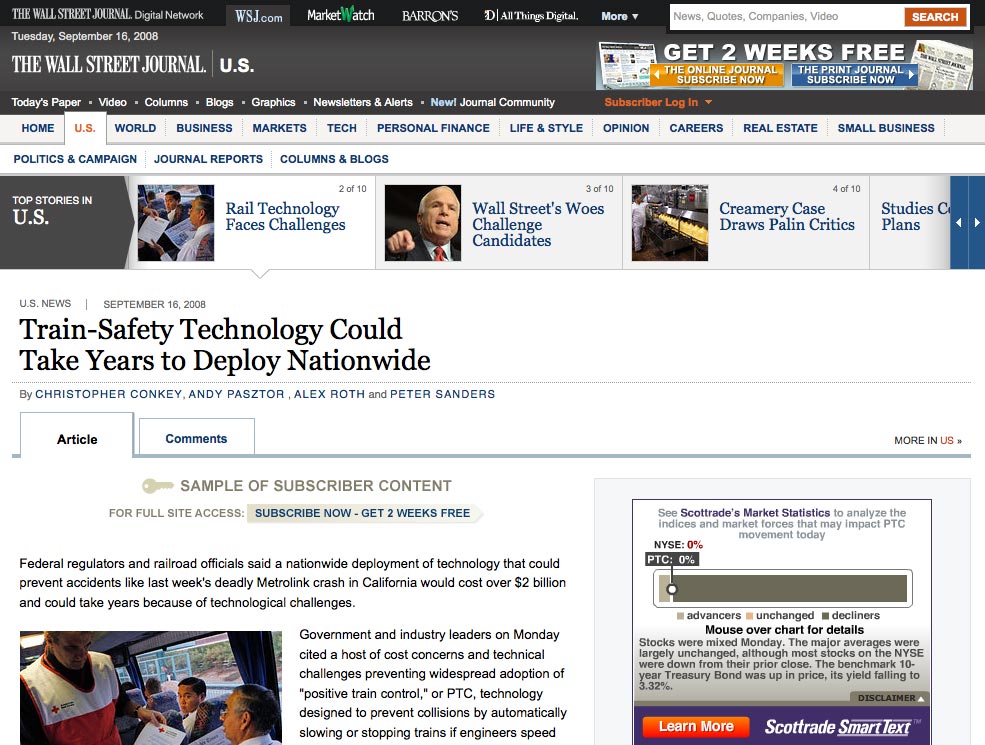With TheTimes.co.uk and SundayTimes.co.uk still not releasing traffic figures through the Audit Bureau of Circulations, we can’t yet see the impact of the paywall in terms of browser figures. But according to research published by Enders Analysis, the value of a paywall subscriber is only a fraction of a print reader.
The research, carried out by Benedict Evans, compared annual incomes from subscribers for paywalled newspapers TheTimes.co.uk and WSJ.com with those for UK quality daily papers.
The main findings quoted online are as follows:
A newspaper paywall subscriber is worth only a quarter to a third of a print buyer: even if every single print buyer is successfully converted to the paywall, newspapers will still face a basic problem of scale.
Paywalls will not be able to compensate for lower revenue per reader by expanding the audience for paid news, due to the long term decline of circulation, free online news, 24-hour broadcast news and free-sheets.
Future change will be radical: publishers may need to consider producing a newspaper its loyal readers recognise and value with just 200 rather than 500 journalists.
